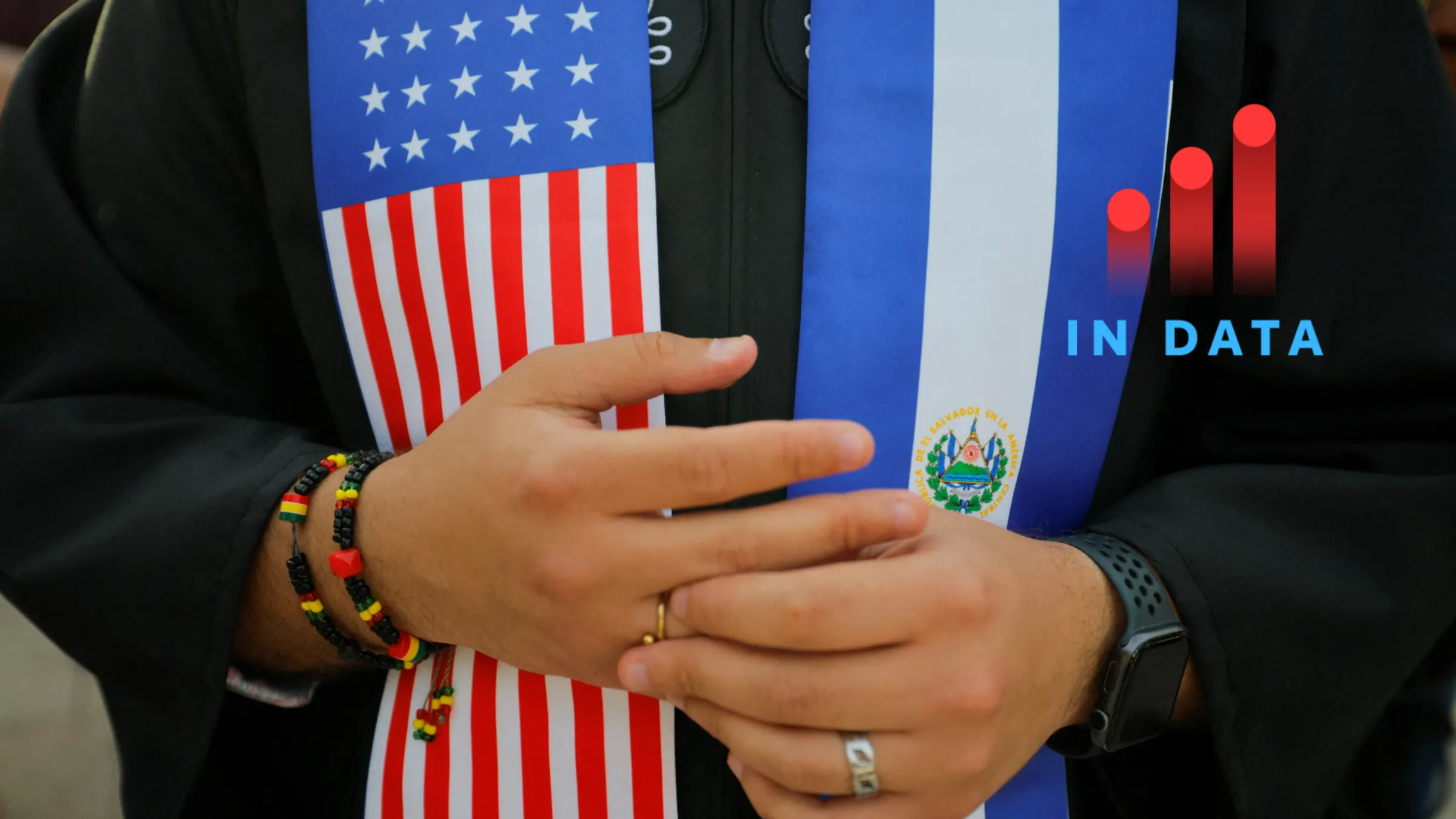Context is powered by the Thomson Reuters Foundation Newsroom.
Our Standards: Thomson Reuters Trust Principles

A person wears a stole with the flags of U.S. and El Salvador as members of the Harvard community take part in a "Harvard Stand United" rally to "support and celebrate" the school's international students at Harvard University in Cambridge, Massachusetts, U.S., May 27, 2025. REUTERS/Brian Snyder
From the U.S. to Canada, tougher immigration rules are pushing foreign students to non-traditional markets.
LAGOS - More than half of all international students last year studied in four countries: the United States, Canada, Britain and Australia, according to Project Atlas 2024, a research portal focused on student mobility.
The United States - home to elite universities such as Harvard, the Massachusetts Institute of Technology (MIT) and Stanford - was the top destination in 2024, hosting a record 1,126,690 students, according to the portal, which is run by the Institute of International Education.
But immigration policy changes in these destinations, including limits on international student intake, visa revocation plans and deportations, could reshape the education landscape.
Since taking office in January, U.S. President Donald Trump has revoked and then reinstated the visas of thousands of international students as part of his hardline immigration agenda.
High-profile arrests, including of Columbia University graduate student Mahmoud Khalil for three months, followed Trump's orders to deport non-citizen students with pro-Palestinian or anti-Israel views.
In May, the administration paused the scheduling of student visa appointments overseas before resuming them in June with increased social-media vetting of applicants.
The American Council on Education said the pause on visas "would send a message that our nation no longer welcomes talented students and scholars from other countries."
International students, mostly from China and India, contributed $50 billion in tuition fees and other living expenses in 2023, a revenue stream at risk due to Trump's crackdown on student visas.
Last year, Canada introduced a cap on new international student permits, leading to a drop in numbers from India, Nigeria and the Philippines in particular.
The government said the international student programme had put pressure on housing and healthcare, and some institutions were exploiting the system, offering sham degrees.
The immigration ministry said in January that Canada will issue 437,000 study permits this year, a 10% reduction from 2024 and down from more than 650,000 in 2023.
International students numbers have been on the decline in Britain since 2023.
A record 484,000 student visas were issued in 2022, but this fell to 457,673 in 2023 and to 393,000 by the end of 2024, according to data from the Home Office, the government department overseeing immigration in the UK.
New rules banning international students from bringing family members with them were introduced in 2024 to prevent the abuse of the student visa system, the Home Office said.
In August, Australia, favoured by students because of its large immigrant population, said it would cap international student intakes at 270,000 per year to address a housing crisis.
In 2022, there were over 1 million Chinese students abroad, with India in second place, according to the World Migration 2024 report.
In 2024, Indian students surpassed the number of Chinese students in the United States for the first time since 2009.
Indian students outnumbered Chinese students in the UK for the first time in more than a decade in 2024. Countries with growing numbers of students enrolling at British schools include Nigeria, Pakistan and Bangladesh.
Universities in the Asia-Pacific region are offering grants and admissions for international students.
Japan's Osaka University has offered tuition waivers and grants to American students and researchers who wish to transfer. The Hong Kong University of Science & Technology has pledged unconditional admission to international students displaced from Harvard.
In July, Dubai, which hosts more than a dozen satellite campuses of Western universities, said it wanted to increase the percentage of international students from 35% of the student body to 50% by 2033, as part of its drive to double its economy by that year.
(Reporting by Bukola Adebayo; Editing by Ayla Jean Yackley.)
Context is powered by the Thomson Reuters Foundation Newsroom.
Our Standards: Thomson Reuters Trust Principles